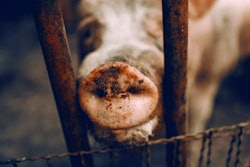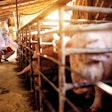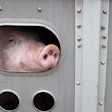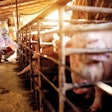
Classical swine fever virus and pseudorabies virus capable of surviving in multiple feed ingredients
Two more high-risk foreign animal viruses may be capable of spreading in animal feed, but the risk varies from one feed ingredient to the next.
A January paper from Kansas State University shows that classical swine fever and pseudorabies virus are capable of surviving trans-oceanic shipping in multiple feed ingredients. Like African swine fever, these two viruses appear to last longer in certain feed ingredients than in the laboratory media used to grow the viruses for experiments, suggesting that these ingredients could be worthy targets of strategies to mitigate the spread of disease.
The research also suggests that at least three of the four viruses of greatest concern to swine producers remain stable in animal feed for long periods of time, according to Megan Niederwerder, an assistant professor of pathobiology in the Kansas State University College of Veterinary Medicine. Classical and African swine fevers, pseudorabies and foot-and-mouth disease could cause significant economic damage if any of the four diseases enters the United States. While researchers have not studied the persistence of foot-and-mouth disease directly in animal feed, Niederwerder said studies of similar viruses suggest it, too, could be transmitted in several ingredients.
This isn’t to suggest that all viruses are capable of surviving extended periods of time in animal feed — influenza A, for example, does not.
“So we have both spectrums,” Niederwerder said. “Some viruses maybe are not stable in feed ingredients, and potentially some are.”
Viruses also differ in which specific ingredients they tolerate. Psuedorabies, for example, was found to survive at least 37 days in conventional and organic soybean meal, lysine, choline, vitamin D, moist cat and dog food, dry dog food and pork sausage casings, while classical swine fever remained stable in only the soybean meal and pork sausage casings. The latter two ingredients, Niederwerder, are particularly capable of promoting viral stability — preserving the virus better than the media intended specifically for that purpose in the laboratory.
High protein content could be the common factor between the two ingredients, Niederwerder said. The results also suggest these ingredients could benefit from additional viral mitigation.
“If we have limited resources, it helps us pinpoint the ingredients that should have the most attention or resources pout on mitigation strategies,” she said. For example, producers might pay more attention to where they source their soybean meal, particularly if they are making purchases from countries where foreign viruses are circulating. Producers may also consider holding these ingredients, or subjecting them to thermal treatments.
Ideally, Niederwerder said, feed additives could be introduced to mitigate the risk of viral transmission in these ingredients. But chemical solutions may only apply to specific viruses. Physical biosecurity measures and mill security are effective for mitigating all viral contaminates, she said.

















